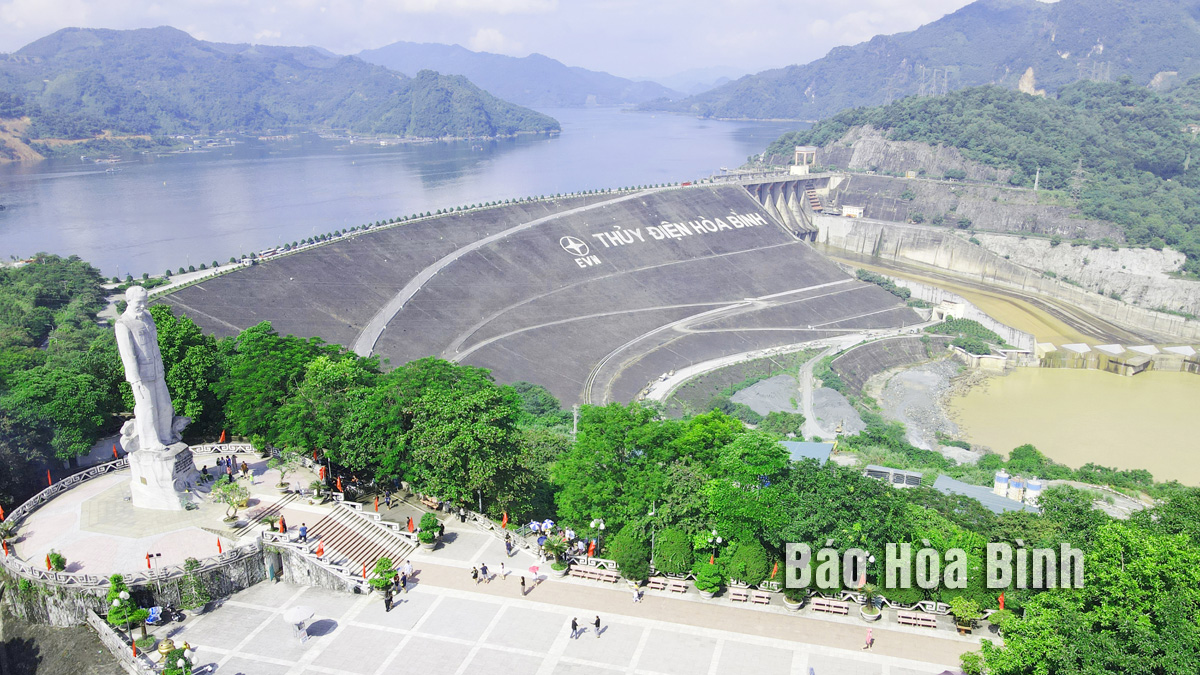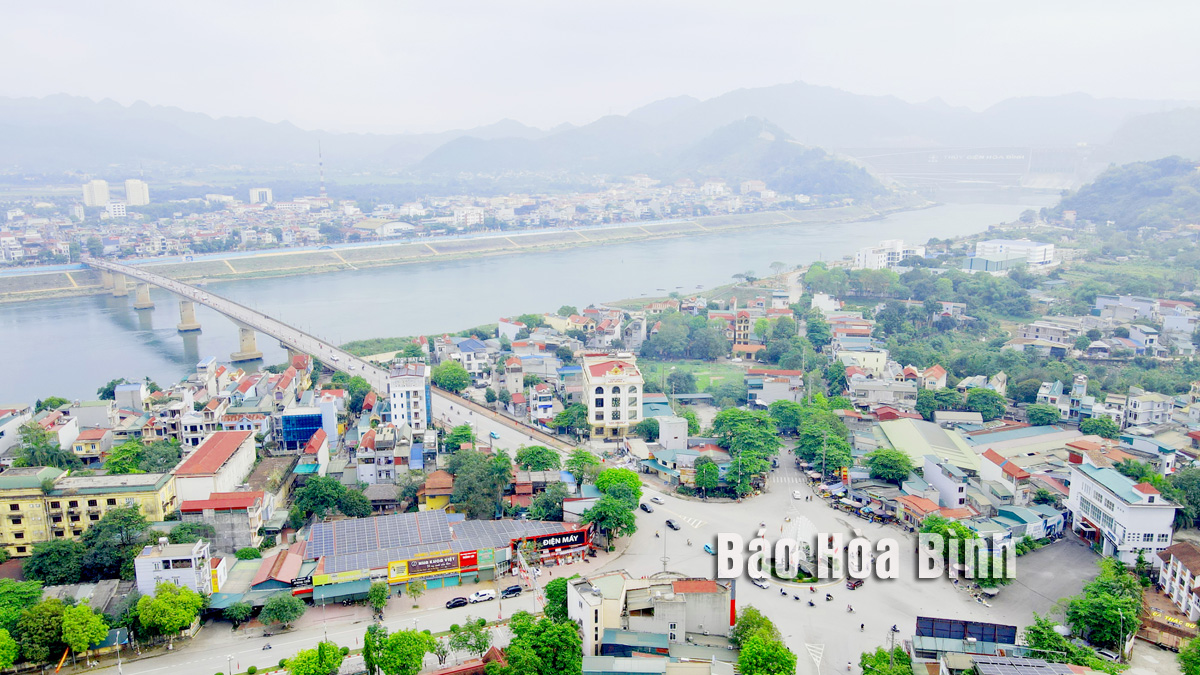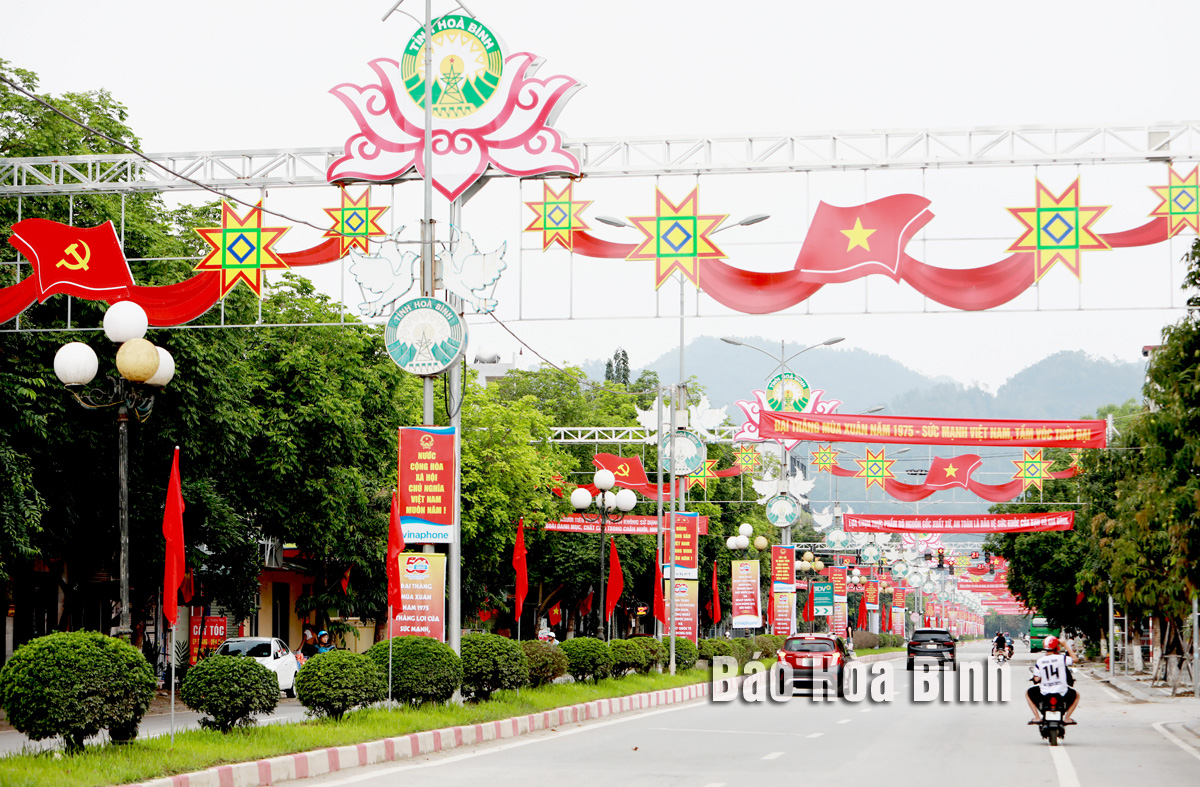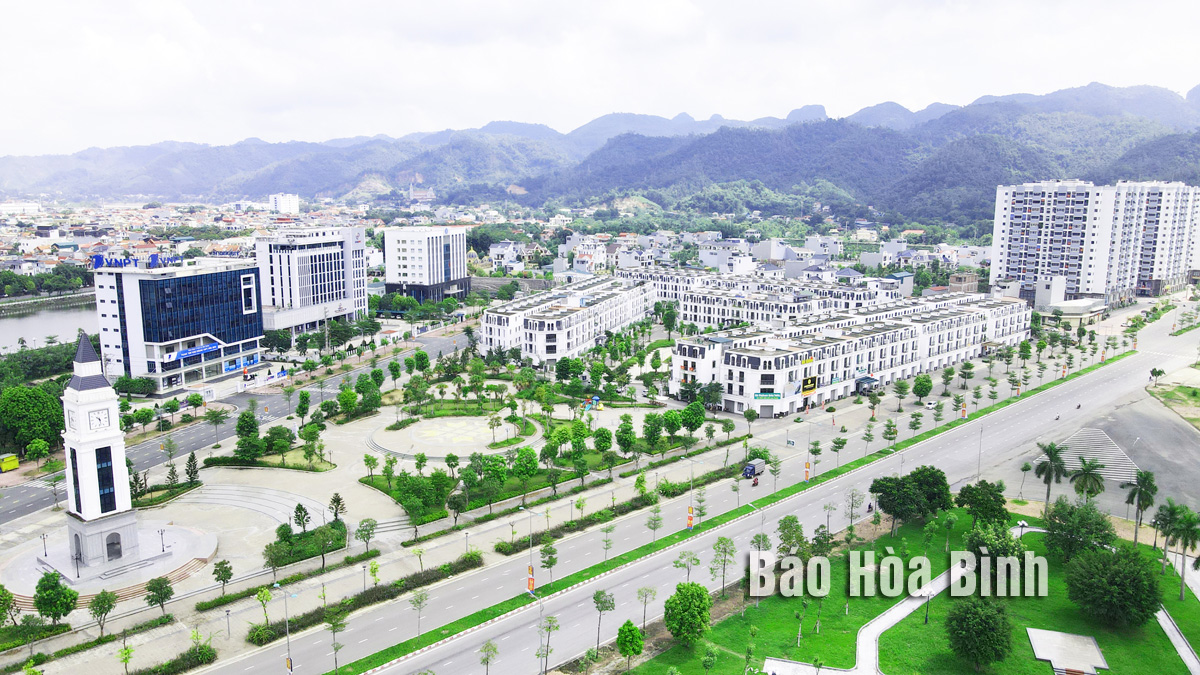
From a once modest mountainous town along the Da river, Hoa Binh city has now donned a "new coat.” Central roads have been expanded and upgraded, while new urban areas have been developed in a synchronized manner. A series of completed eco-tourism and resort projects in operation further enhance the charm of this riverside city.
In January 2025, Hoa Binh city was
officially recognized as a Class II urban area - an important milestone that
reflects the tireless efforts of the city’s Party Committee, government and
people in realizing the aspiration of building a "more dignified and beautiful”
homeland.
In line with the national policy on
streamlining the administrative apparatus, from July 1, 2025, there will no
longer be district-level administrative units within the city. Hoa Binh will
always be a source of pride, deeply etched in the hearts of its people. This photo collection captures the
beauty and unforgettable moments of our beloved Hoa Binh city.
 President
Ho Chi Minh Statue - an architectural highlight atop
the Hoa Binh Hydropower Plant.
President
Ho Chi Minh Statue - an architectural highlight atop
the Hoa Binh Hydropower Plant.
 Urban
appearance of Hoa Binh city officially are
recognized as a Class II urban area.
Urban
appearance of Hoa Binh city officially are
recognized as a Class II urban area.
 The streets of Hoa Binh city are vibrant with flags and
banners to celebrate the nation's major holidays.
The streets of Hoa Binh city are vibrant with flags and
banners to celebrate the nation's major holidays.
 The Hoa Binh Square in Quynh Lam ward is synchronously
planned with modern infrastructure.
The Hoa Binh Square in Quynh Lam ward is synchronously
planned with modern infrastructure.
 Huu Nghi bridge connects the two banks of the Da river,
opening up urban development space for Hoa Binh city.
Huu Nghi bridge connects the two banks of the Da river,
opening up urban development space for Hoa Binh city.
Nestled halfway up the mountains in Cao Son commune, Da Bac district, Sung village appears like a picture preserved intact through generations. With a history of over 300 years, the village is home to nearly 100 households of Dao Tien ethnic group – the people who still maintain their distinctive characteristics in housing architecture, clothing, customs and traditional crafts. The village is drawing increasing interest and exploration from both domestic and international tourists, as every visit becomes a cultural journey to experience the authenticity, friendliness, and hospitality of this highland region.
This Spring, more than 1,000 phoenix trees in Thang Hamlet, Thach Yen Commune (Cao Phong) have bloomed brilliantly, quickly spreading on social media. The picturesque beauty of the flower garden has attracted the participation of many people to admire and take photos.
This belief is both a guiding principle and a lifelong ambition for Sa Van Cam, a member of the Tay ethnic group in Da Bac district and a passionate advocate for the Tay culture. The native has devoted years to the revival, preservation, and teaching of the ancient Tay script.
Located just 25 km from Hoa Binh city and approximately 100km from Hanoi, with a journey of around 1 hour 45 minutes, Ngoi Hoa ecotourism site (PriorBay Resort) in Suoi Hoa commune, Tan Lac district, is a stunning peninsula retreat, and a standout destination within the Hoa Binh Reservoir tourism area. Officially opening in February this year, the resort captivates visitors with its distinctive vacation products and a range of exciting adventure experiences.
Over 1,500 women paraded in traditional ao dai (long dress) at Hoa Binh Square on March 5 to mark Ao Dai Week 2025 launched by the Vietnam Women's Union. Organised by the provincial Women’s Union in collaboration with the city’s chapter, the annual event features lively folk dance performances and a colorful parade that celebrated the beauty of Vietnam’s traditional dress and its rich cultural heritage.
With skillful and meticulous craftsmanship, H’Mong women in Pa Co Commune, Mai Chau district carefully carry out dozens of manual steps to weave skirts, bags, scarves… with vibrant colors. They continue to preserve the traditional brocade weaving, transforming these products into tourism goods while also promoting the H’Mong people's unique cultural beauty.



 President
Ho Chi Minh Statue - an architectural highlight atop
the Hoa Binh Hydropower Plant.
President
Ho Chi Minh Statue - an architectural highlight atop
the Hoa Binh Hydropower Plant. Urban
appearance of Hoa Binh city officially are
recognized as a Class II urban area.
Urban
appearance of Hoa Binh city officially are
recognized as a Class II urban area. The streets of Hoa Binh city are vibrant with flags and
banners to celebrate the nation's major holidays.
The streets of Hoa Binh city are vibrant with flags and
banners to celebrate the nation's major holidays.  The Hoa Binh Square in Quynh Lam ward is synchronously
planned with modern infrastructure.
The Hoa Binh Square in Quynh Lam ward is synchronously
planned with modern infrastructure.  Huu Nghi bridge connects the two banks of the Da river,
opening up urban development space for Hoa Binh city.
Huu Nghi bridge connects the two banks of the Da river,
opening up urban development space for Hoa Binh city.